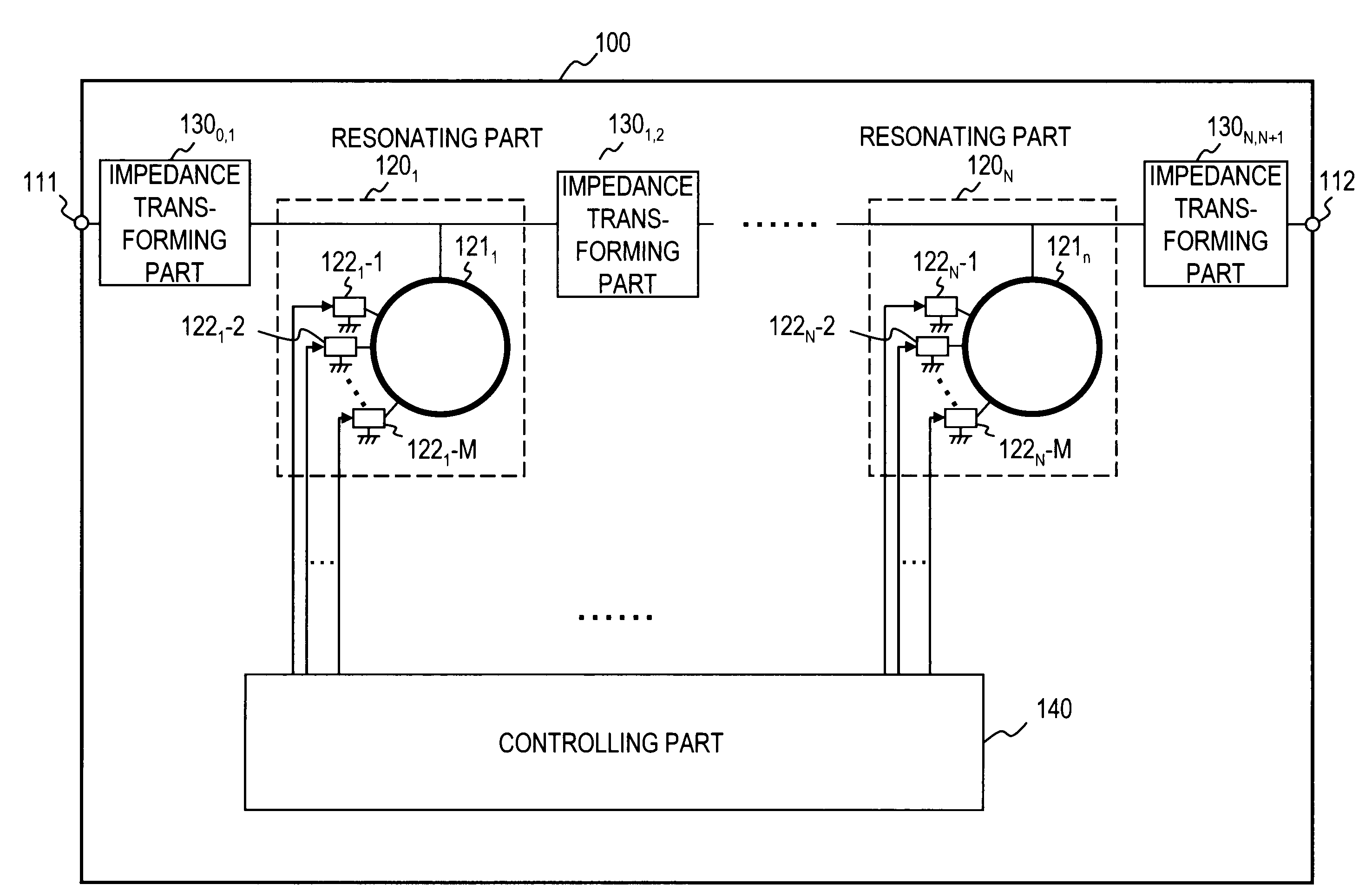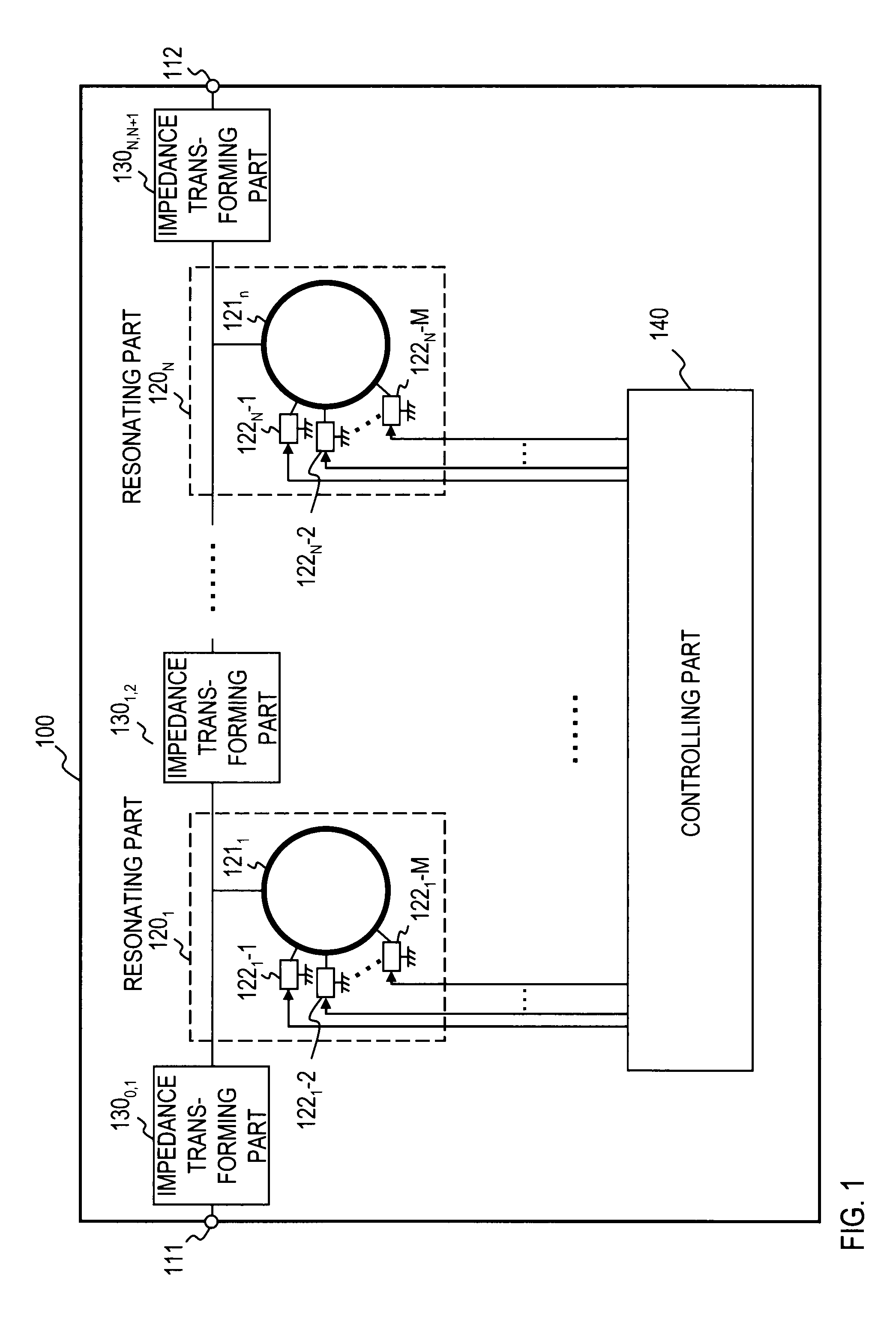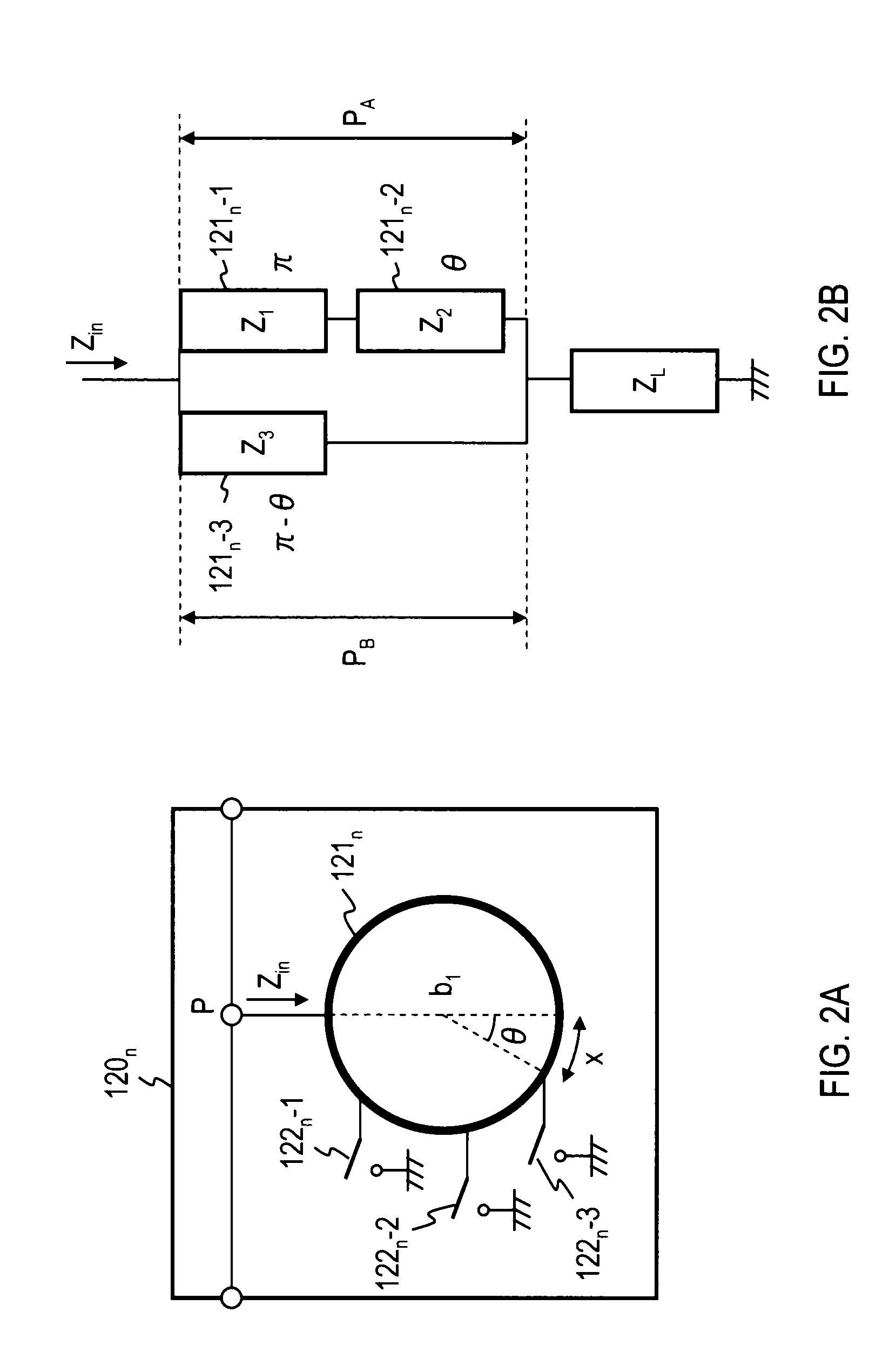Signal selecting device
a signal selection and signal technology, applied in the direction of resonators, electrical equipment, waveguides, etc., can solve the problems of increasing the number of components and the circuit area, and achieve the effect of adjusting the bandwidth, facilitating design, and reducing the number of components
- Summary
- Abstract
- Description
- Claims
- Application Information
AI Technical Summary
Benefits of technology
Problems solved by technology
Method used
Image
Examples
embodiment 1
[0048]FIG. 1 is a diagram showing an exemplary functional configuration of a signal selecting device according to an embodiment 1. A signal selecting device 100 has two input / output ports 111 and 112, N resonating parts 1201 to 120N, N+1 impedance transforming parts 1300,1 to 130N,N+1, and a controlling part 140. The resonating part 120n (n represents any integer in a possible range and is an integer from 1 to N in this case) has a ring conductor 121n having a length equal to one wavelength at a resonant frequency or an integral multiple thereof, and M switches 122n-1 to 122n-M each of which is connected to a different part of the ring conductor 121n at one end thereof and to a ground conductor at the other end thereof. The controlling part 140 controls the state of the N*M switches 1221-1 to 122N-M. (“N*M” shows multiplying N by M.) The resonating parts 1201 to 120N are disposed in series between the two input / output ports. The impedance transforming parts 1300,1 to 130N,N+1 are di...
embodiment 2
[0059]In the embodiment 1, a signal selecting device according to the present invention has been generally described. In an embodiment 2, a signal selecting device according to the present invention will be specifically described. FIG. 6 is a diagram showing an exemplary functional configuration of a signal selecting device according to the embodiment 2. A signal selecting device 200 has input / output ports 211 and 212, three resonating parts 2201 to 2203, four impedance transforming parts 2300,1 to 2303,4, and a controlling part 240. The resonating part 220n has a ring conductor 221n. Although not shown in FIG. 6, the resonating part 220n has switches as in the embodiment 1. The input / output ports 211 and 212 have a port impedance of 50Ω. The resonating part 220n has a resonant frequency of 5 GHz, and the ring conductor 221n has a characteristic impedance of 50Ω. For the convenience of explanation, it is assumed that the position of grounding of the resonator is changed instead of s...
embodiment 3
[0064]In the embodiment 2, all the impedance transforming parts have the same, fixed characteristics. If such identical impedance transforming parts are used in this way, the signal selecting device can be easily designed and fabricated. However, the impedance transforming parts do not always have to have the same characteristics but can have different characteristics or variable characteristics. FIG. 8 is a diagram showing an exemplary functional configuration of a signal selecting device according to an embodiment 3. A signal selecting device 300 has two input / output ports 311 and 312, N resonating parts 3201 to 320N, N+1 impedance transforming parts 3300,1 to 230N,N+1 capable of changing the characteristics, and a controlling part 340. While all the impedance transforming parts 3300,1 to 330N,N+11 are shown as being capable of changing the characteristics in FIG. 8, only one particular impedance transforming part may be capable of changing the characteristics. The resonating part...
PUM
 Login to View More
Login to View More Abstract
Description
Claims
Application Information
 Login to View More
Login to View More - R&D
- Intellectual Property
- Life Sciences
- Materials
- Tech Scout
- Unparalleled Data Quality
- Higher Quality Content
- 60% Fewer Hallucinations
Browse by: Latest US Patents, China's latest patents, Technical Efficacy Thesaurus, Application Domain, Technology Topic, Popular Technical Reports.
© 2025 PatSnap. All rights reserved.Legal|Privacy policy|Modern Slavery Act Transparency Statement|Sitemap|About US| Contact US: help@patsnap.com



